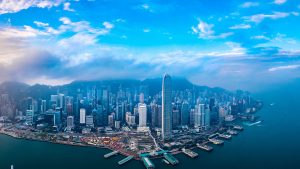Belt-tightening amid massive spending requirements

BW FILE PHOTO
By Andrew J. Masigan
NEDA Secretary Arsenio M. Balisacan will have to strike an uneasy balance as he formulates economic policy for the Marcos administration.
On one hand, he must continue the infrastructure programs of the Duterte administration as these are necessary investments for our economic future. At the same time, a deluge of new investments must be made to elevate our education system, broaden healthcare services and provide social protection for the poorest among us through the conditional cash transfer program. All these necessitate massive spending on the part of the government.
On the other hand, he must tighten belts. The Marcos administration inherited an economy that operates on a deficit -— one only bridged by debt. From a public debt of roughly P5.9 trillion in 2016, debt ballooned to P12.68 trillion as of January this year, representing 63.5% of GDP. In other words, the Philippines owes P63.5 pesos for every P100 worth of goods and services she produces. Our debt-to-GDP ratio surpasses the government’s own self-imposed limit of 59.1% and the international standard for developing countries of 60%.
So Secretary Balisacan is under pressure to spend more on infrastructure and social services while slashing expenses and avoiding the take-up of new loans.
Putting a stop to ongoing infrastructure projects is out of the question as it is bad practice and will send an unfavorable signal to investors, Mr. Balisacan has said. As of April 2021, just 12 out of 119 flagship infrastructure projects have been completed. Another seven should have been completed by the time Mr. Duterte stepped down, if the former President’s spokesmen are to be believed. That leaves 100 projects still in the pipeline, all of which require funding.
The Marcos administration intends to sustain infrastructure spending at 5.5% of GDP in 2022, 5.4% in 2023 and 5.3% in 2024 and 2025.
Meanwhile, budget appropriations for education, healthcare and social protection must increase by at least 40%, 30% and 20%, respectively, to make an impact. Investing in health and human capital capacitation is an equally important investment in our economic future.
And then there is debt service. Mr. Duterte left Mr. Marcos with P834 billion in debt falling due this year; roughly 4.2 trillion will be falling due within the decade.
Difficult as it may seem, performing this balancing act is possible. However, it will require the adoption of radical policies.
The first is to crack down on budgetary leakage. Few are aware that as much as 15% of the national budget is lost to graft and corruption. This amount was validated by a senior official of the Department of Budget and Management. Graft and corruption come by way of procurement overpricing, ghost purchases, ghost payrolls, congressional pork barrel funds, frivolous budget insertions, etc. To better appreciate the scale of budgetary leaks at present, the volume of public funds thought to be lost to graft and corruption is nearly enough to pay our debt service bill this year.
There is no way out of it -— graft and corruption must be culled to get maximum value out of the national budget. This will entail sacrifices from those that benefit from it most — the legislature and grafters from the Executive branch.
Second is to spread the cost of infrastructure. The funding requirement of the 100 remaining flagship projects is well over P4 trillion. Mr. Duterte’s preference for loans (through official development assistance) is simply not sustainable. Fitch’s negative outlook on the Philippines, as affirmed in February, underscores the need to adjust the funding mix for infrastructure development.
Mr. Balisacan was correct when he said that private capital must be tapped to help foot the infrastructure bill. The Philippine playbook on public-private partnerships (PPP), developed during the Aquino administration, is so advanced that it has been used as a template by the governments of Thailand, Indonesia, India and Poland, among others. It will be foolish not to tap the wealth of private capital for projects where private participation is warranted, especially considering our vast experience in undertaking PPP projects. Besides, the private sector has consistently proven that it can build, operate and maintain projects more efficiently than government can. By leveraging PPP, infrastructure projects that would have required a cash outlay on the part of the government will instead become a source of income by way of royalties and taxes.
Although Mr. Balisacan has ruled out canceling infrastructure projects, I still think that certain projects need to be reviewed. Poorly managed projects must be rationalized or privatized. Those that garnered a negative report from the Commission on Audit must be subject to cancellation. One of them is the Kaliwa Dam Project. The CoA reported that there was a simulated bid among Chinese contractors in favor of the winner, China Energy Engineering Corp. Projects tainted with corruption from the get-go should have no place in the current administration. Similarly, projects that employ majority foreign workers should be canceled or reconfigured as they leave out Filipino laborers at the Philippine government’s expense.
Third, increase tax collection. Government’s tax collection efficiency is about 15.5% of GDP today. It is simply not enough to bridge the budget gap, which stood at 8.6% of GDP or P1.67 trillion last year. Mr. Balisacan and the rest of the economic team aspire to gradually reduce the budget deficit to 7.6% in 2022, 6.1% in 2023, 5.1% in 2024 and 4.1% in 2025.
Finance Secretary Benjamin E. Diokno said that he is not inclined to impose new taxes. Instead, he would rather increase collection efficiency by automation and by cracking down on tax delinquents, tax evaders and smugglers. One wonders if the family with the biggest tax delinquency, the Marcoses themselves, will be made to settle their P23-billion estate tax obligation. Not to do so will be unfair to the rest of the Filipino people who will surely be pressured by the BIR to pay up.
Fourth is to have the economy grow its way out of its debt. If the economy is able to grow by at least 7% per year until 2025 and 6% until 2028, we will be able to bring down our debt ratios to manageable levels and service debt with ease. Growing by this rate will make the Philippines a half-trillion-dollar economy by 2025.
Mr. Balisacan hit the nail on the head when he said that investment should be channeled to bring about the resurgence of agriculture and manufacturing. These sectors have been in steady decline, such that they now comprise less than 40% of economic output today. It is the reason why we have become import-dependent for the majority of our needs. The situation is so bad that we import basic food products, including rice, sugar and pork, and basic manufactured goods such as textiles and construction materials.
Increasing agriculture and manufacturing output will reduce our import bill, increase export and tax revenue, and reduce our trade deficit. It makes sense to focus time and resources on these sectors. It will also generate jobs to reduce our 5.7% unemployment rate.
We cannot do it alone. We need foreign direct investment not only for the agriculture and manufacturing space but also for infrastructure and technology-driven industries. FDIs are the silver bullet that can solve our budgetary gaps and accelerate our development.
There have been breakthroughs, facilitated by the Duterte administration, which made the Philippines more competitive in attracting FDI. The recent passage of amendments to the Public Service Act, the Foreign Investment Act and the Retail Trade Liberalization Act have opened up more sectors to foreign ownership. The amendments override the prohibitive provision in the 1987 constitution relating to foreign investment. The CREATE Law has made us regionally competitive in terms of taxation.
But these are not enough. The next administration must institute reforms to reduce red tape and unease in doing business. This is true on both the national and local levels. Automation and digitization are key to addressing these. Other areas needing resolution are power security and cost, water security and, most important, the credibility and speed of the justice system.
Striking a balance between aggressive spending and belt-tightening is a challenge. But it can be done. The good thing is that Mr. Balisacan and the rest of the economic team have a well-considered path forward.
Andrew J. Masigan writes the Numbers Don’t Lie column for BusinessWorld. His e-mail address is andrew_rs6@yahoo.com. Follow him on Twitter @aj_masigan




